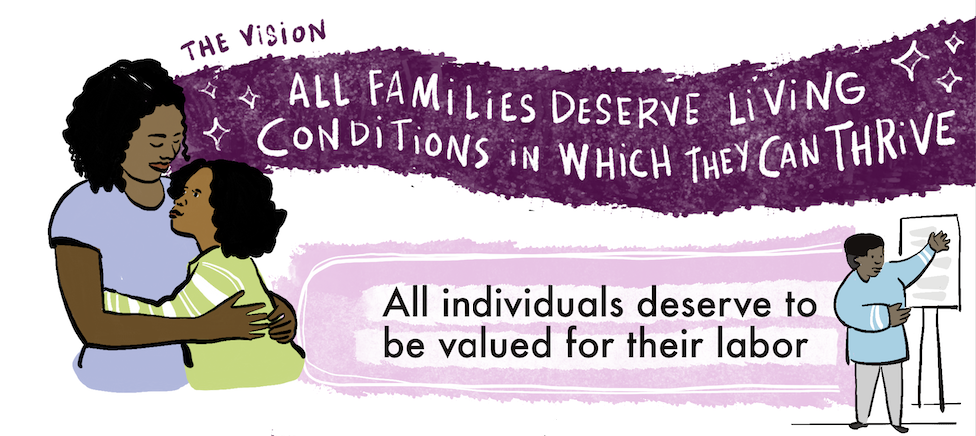Pay Equity and a Thriving Wage
All individuals deserve to be valued for their labor
Leading with the shared vision that “All families deserve living conditions in which they can thrive,” this graphic illustration utilizes NRCDV’s Storytelling Framework to center survivors of color for whom economic insecurity poses significant barriers to safety and well-being. This resource makes the case for wage equity as a critical pathway to intimate partner violence prevention, and can be used with a variety of audiences as a tool to move people to action.
This resource draws on lessons learned by advocates funded to advance prevention through CDC’s DELTA Impact program, specifically in their work to advance economic justice by promoting a thriving wage. It provides an overview of the systems of oppression that cause harm, especially to Black, Indigenous, and People of Color, and offers tangible strategies to move toward racial and economic justice. It explores how we can change the conditions “so that survivors, especially Black women and gender expansive individuals, can thrive free from violence.”
This resource was developed by the National Resource Center on Domestic Violence in partnership with Domestic Violence Prevention Enhancement and Leadership Through Alliances (DELTA) Impact program recipients, guided and inspired by Joyce Kyles of Joyce Kyles Consulting.
This story, Pay Equity and a Thriving Wage: All individuals deserve to be valued for their labor, is available for download in English and Spanish.







